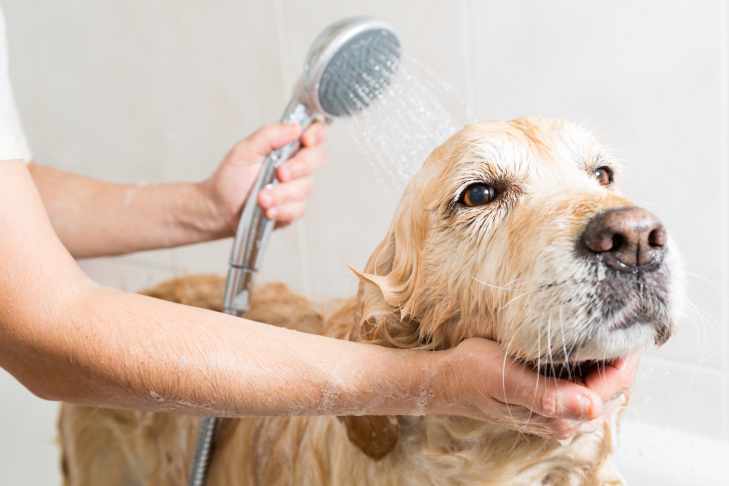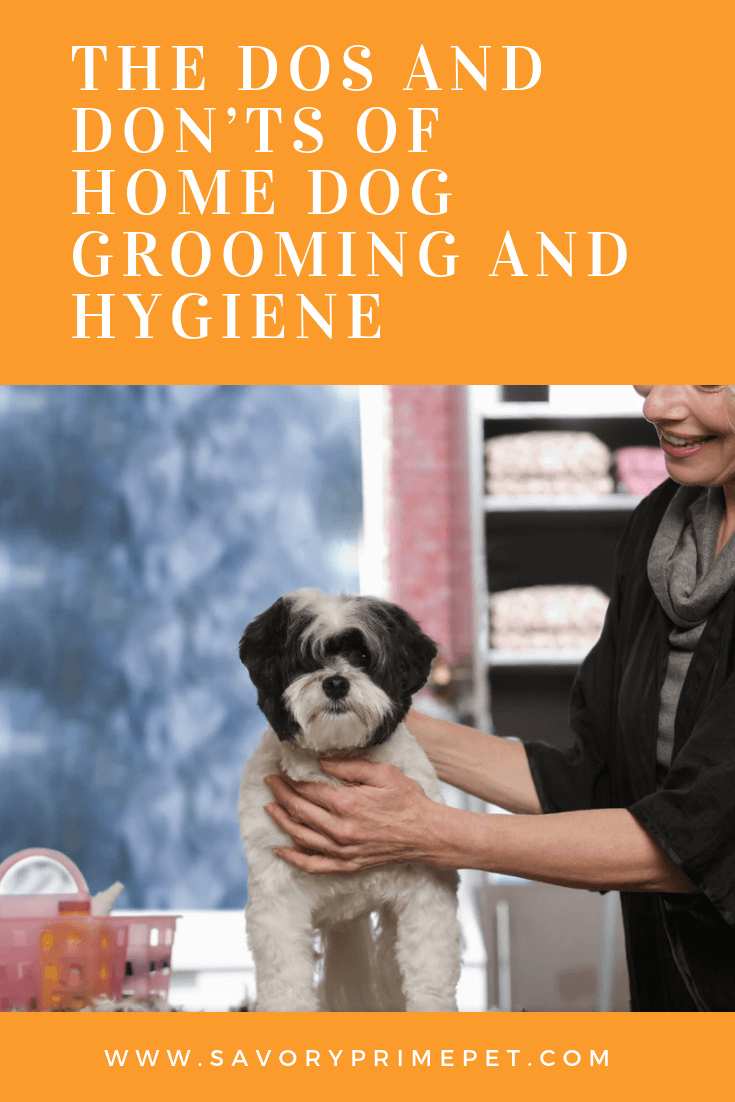Dog Grooming at Home
What to Do
- Obtain the right tools: the mentors listed above will help guide you in the purchase of the right nail trimmers, a styptic powder used to stop nail bleeding such as Kwik Stop, teeth cleaning tools, brushes, wide and fine-tooth combs, shampoos, and even blow dryers if needed. They can also help you learn about proper tables used for grooming and even a grooming arm that will hold your pup in place.
- Use a brush that is intended for the coat of your dog breed. For example, bristle brushes are preferred for short-haired breeds and sleeker types of brushes are preferred for long-haired breeds. Check with your professional groomer, breeder, or veterinarian to ensure you are using the best option before making your purchase.
- With the appropriate brush for your dog’s coat, brush your canine companion every other day (even short-haired breeds) to remove dirt and debris, prevent matting, control shedding, and create a shiny coat.
- Use a damp towel to wipe any dirt, mud, sand, pine needles, or other outdoor debris from your dog’s coat as needed.
- During your grooming session, check your dog daily for ticks, or more than once per day during tick season. Ask your veterinarian to train you on the safest method for tick removal. There are tools available for purchase that can help make removal easier. Your groomer may also be able to help you. The more quickly a tick is removed from a dog, the better.
- Check your dog’s pads regularly. Not just for cleanliness but to ensure that they are not dry, cracked, or injured in any way. Excessive hair may grow between your dog’s toes. It can become matted or cause other problems. It should be trimmed to be even with the paw pads or slightly shorter. This must be done carefully to prevent cutting your dog. Small, blunt-edge scissors or a small, narrow clipper blade should be used only after being taught proper procedures by your groomer, breeder, or veterinary staff.
- Keep your dog’s nails trimmed. Your vet and/or groomer can show you how to safely trim nails. If you do not feel comfortable doing it on your own, it is usually a quick and inexpensive trip to a groomer or your veterinarian’s office. Some dog owners find rotary trimmers a safe alternative to clippers, but it takes more time and your dog will likely require training to tolerate this method.
- Before you start trimming nails, make sure you have easy access to a product that will stop the nail from bleeding if cut too short, such as a styptic pencil or a cauterizing powder, like Kwik Stop. Nails should be trimmed regularly to keep them and the quick (which supplies blood to the nail) from growing too long. Regular trimming can help keep the quick shorter and decrease the chances of cutting it when you are trimming the nails. If your dog has dark toenails, it is especially difficult to identify where the quick ends. You may want to seek guidance from your veterinarian before trying to cut dark nails on your own.
- Is your dog a breed that has hair covering his eyes? If so, clean with a damp cloth and keep the hair trimmed. Make sure the cut doesn’t cause hair to fall into your dog’s eyes and irritate them.
- Wipe the inside of your dog’s ears weekly with a moist cotton ball or soft cloth. At the same time, you should take a good look and smell each ear and ear canal. Any signs of severe redness, swelling, debris, or discharge (brown or yellow), or a fetid, “yeasty” odor may be a sign of infection and requires a visit to your veterinarian. This is often noted shortly after a bath or swimming due to the accumulation of moisture. It is important to thoroughly dry each ear after they get wet.
- Daily brushing of your dog’s teeth is best, but you should brush your dog’s teeth at least a few times per week. Plaque starts to build up after 48 hours. You can also try wrapping your finger with gauze or a washcloth. Wipe the teeth and massage the gums. Dental problems in dogs can lead to other problems, including serious health issues such as heart disease, kidney disease, and more. Get your dog accustomed to having his teeth cleaned regularly. It’s good for your pet and can save you from costly dental work as the dog ages.
- Always use veterinarian-approved hygiene products on your dog.
What Not to Do
- Do not use “human” beauty and hygiene products such as shampoo, conditioner, and toothpaste on your dog. Many human tubes of toothpaste contain xylitol, which is toxic to dogs.
- Avoid clipping your dog’s nails unless you’ve been taught the proper technique, feel comfortable doing so, and have proper dog nail clippers or a rotary trimmer and products to stop bleeding should it occur. Clipping too short can cause extreme pain and bleeding.
- If you notice any injuries, sores, lacerations, or wounds of any kind on your dog, do not attempt to treat them yourself. Call or schedule an appointment with your veterinarian.
- Do not try to clip or shave your dog’s hair by yourself without proper training. Grooming professionals have the tools and knowledge to safely groom sensitive areas. In addition, they know the grooming needs of your breed.
- Keep your household scissors in the drawer where they belong. Do not attempt to cut mats out of your dog’s coat yourself. One wrong movement from a nervous pup could result in serious injury. Often, the best way to remove a mat is using your fingers, some dog conditioner, a couple of different types of combs, and a lot of time and patience.
- Do not spray your dog with non-veterinarian approved scents such as perfume. Dogs are far more sensitive to fragrance than humans and many products contain dangerous ingredients. Fragrances can result in respiratory problems for sensitive dogs.
- In cool or cold temperatures, do not bathe your dog outdoors, as it can result in dangerous drops in your dog’s body temperature.
- While grooming, if you notice any foreign objects in your dog’s eyes, ears, nose, mouth, or paw pads, do not attempt to remove them yourself — always consult a veterinarian first.
- Do not attempt to express your dog’s anal sacs yourself. This is better done by a groomer or vet, but your veterinarian can train you in the correct way to do it if you are so inclined.
When you combine home grooming and hygiene with regular professional grooming visits, your dog’s coat, nails, teeth, ears, eyes, and paws will be clean, healthy, and odor free — making everyone in the household happy!


